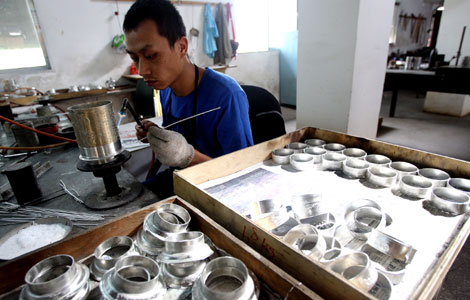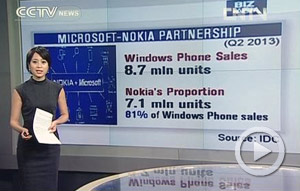Current water inspection practices need attention
Updated: 2013-09-06 22:42
(chinadaily.com.cn)
|
|||||||||||
In a recently issued regulation, Beijing Water Authority required tap water suppliers to publish quality inspection data from October. A column on People's Daily praised the move as a step toward better water quality. Excerpts below:
Have you ever found a scale in your water container? Sometimes the tap water looks a little dark; is it safe to drink?
Beijing residents may start getting answers to these questions starting this October. According to a recent regulation, water suppliers in the city must publish water quality inspection data every season.
Water is the most basic necessity, but there have been several incidents of polluted drinking water that have aroused public suspicion. In February 2012, residents in Zhenjiang, Jiangsu province, noticed a funny smell in their tap water. One month later, residents in Wuhan, Hubei province, also noticed a smell.
Later, it was revealed that the smells were caused by an overuse of disinfectants.
There has been an increase in these sorts of incidents in recent years, which could mean there are problems with water quality supervision.
The new Beijing regulation is welcome because residents, who pay for water, have the right to know its quality. Publishing water quality data might influence better supervision practices and push water authorities to do a better job in fighting water pollution.
But, more needs to be done.
China introduced as early as 2007 a national quality standard on drinking water that contains 106 indexes. Due to inferior technology, a complete inspection was delayed to 2012, then again to 2015.
Many surveys show that 90 percent of China's 4,000 water suppliers still rely on outdated technology. We hope water authorities accelerate updates and impose stricter standards to honor their promise of safe drinking water.
Related Stories
Rubber Duck knockoff in Beijing's Yuyuantan 2013-09-06 15:28
Beijing clean air action plan well-received 2013-09-05 20:46
Beijing sells land at record high price 2013-09-05 20:14
Heavy rain hits Beijing 2013-09-04 16:20
Today's Top News
Xi, Obama meet on ties
Official dismisses looser capital account fears
Renminbi moves into the top 10
Price records set for prime land
Official: US poses a dual threat to global stability
Emerging markets must be heard
Beijing clean air action plan well-received
Japan to test 'ice wall' for leaking water
Hot Topics
Lunar probe , China growth forecasts, Emission rules get tougher, China seen through 'colored lens', International board,
Editor's Picks

|

|

|

|

|

|





